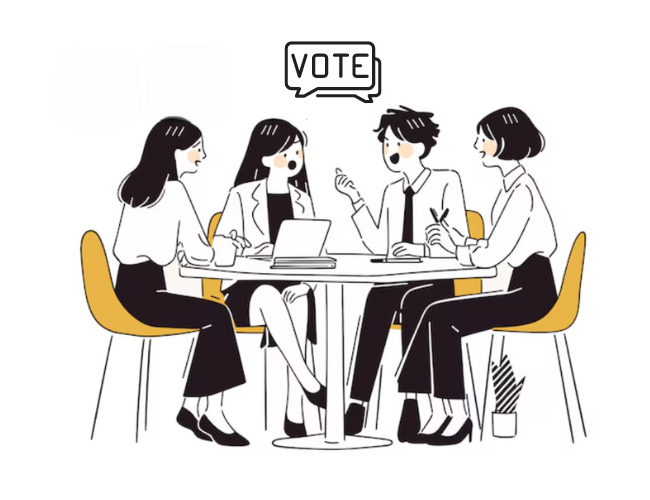The pandemic forced the world to run a collective field experiment in remote work. By and large, the results were surprisingly positive. Several studies found remote work results in higher productivity, job satisfaction, recruitment, and retention.
While remote work has worked out far better than anticipated, the truth is that for many people, in-person work has upsides that are hard to replicate in virtual settings. A primary example is the effect physical interactions have on interpersonal communication. Being in the same space as other employees lessens or entirely removes barriers to initiating a variety of interactions that may otherwise be more difficult to have in virtual settings.
Unplanned Chats
When it comes to communication, the office displays its advantage most clearly with unplanned discussions. These come in several varieties, each allowing employees to express their ideas and questions freely and easily with colleagues and leaders.
“Do You Have A Minute?” Chats
Sometimes, questions arise that could be settled with a quick five-minute conversation with another employee who may or may not be busy with something else. In the office, making this conversation happen is simple. All one needs to do is head over to where that employee is, visually confirm whether they appear to be busy, and then ask if they have time to talk.
In virtual settings, this process can be more complicated. One reason for this is that it’s not always a good time to ask if someone has a few minutes to chat, and the information one needs to determine whether it is a good time is more difficult to obtain in a virtual setting. Remote employees can’t check whether the door to their colleague’s office is closed, see if they are in the middle of a conversation, or examine body language to determine whether they are ready to talk. Of course, many messaging platforms allow employees to set statuses indicating availability, but these aren’t entirely reliable.
To make matters worse, asking remote employees if they have a minute can be a bigger request than if they were in person. This is because preparing for and having virtual interactions can require extra energy. With a bigger ask comes higher standards for verifying that one’s question is worth asking.
With more information to confirm and higher standards of question evaluation, employees may forgo these chats and leave important questions unanswered.
Close-Colleague Chats
Many employees like to work near their close colleagues even when they aren’t collaborating on a project.
In these contexts, the barriers to entry are even lower than they are for the quick-question chats. To start, these employees are already in the same room as the colleagues they may ask for help from, so they can readily assess when it’s appropriate to try to start a conversation. Second, because these colleagues have closer interpersonal relationships, the norms for posing and answering questions are more forgiving. Silly thoughts and half-baked answers can be easily expressed without fear of judgment. While these interactions won’t always lead to new solutions or innovations, the net effect is likely to be positive over time.
Because employees can’t work next to their close colleagues in virtual settings, unplanned chats between them are less likely.
Water Cooler Chats
The office provides employees with opportunities to interact with each other when they aren’t actively trying to get work done. Often referred to as water cooler talk, these casual conversations allow employees to form stronger bonds with their colleagues as they discuss non-work-related aspects of their lives in spaces that aren’t explicitly dedicated to working.
While water cooler chats can indirectly improve organizational performance by cultivating strong employee relationships, they can do so in a more immediate way. Work-related thoughts and conversations are likely to happen even though workers understand the purpose of the space they are in is not for being productive. While the frequency with which these discussions lead to innovative ideas is up for debate, it’s hard to argue that they never inspire fruitful conversations.
Solutions For Remote Work
Of course, the conversational advantages of the physical office don’t mean that every business can or should require all employees to come in every day of the workweek. Remote work has its attractions, and as a result, many employers will allow employees to work from home at least some of the time. Fortunately, there are several tips and tricks employers can use to simulate the features of the office that facilitate spontaneous discussions.
- Virtual work-together meetings: Virtual meetings are good for more than updates and problem-solving sessions. They are also useful for recreating the sense that one is working in the same space as a colleague. With this in mind, employers can encourage workers to schedule work-together meetings, where employees work together on their individual tasks in a single virtual space, thereby providing them with opportunities to spark unplanned chats with colleagues.
- No camera norms: Cameras can make meetings extra stressful and draining. For one thing, employees may feel they need to make themselves and their backgrounds “presentable.” For another, when cameras are on, employees have to be “on.” They must be prepared to appear attentive, alert, and intently focused on the meeting. These factors can make employees less disposed to agree to chats or to ask others to have them.
By creating an optional no-camera norm, employers can reduce the burden of holding a virtual meeting, making spontaneous chats easier to initiate and sustain.
- Virtual office hours: Teachers often specify time slots when they will be available to answer questions in their office. This academic practice is easy to replicate in corporate settings and may be especially useful in virtual environments. By simply turning on the camera and holding a virtual office hour at a consistent time each week, employers can lower the threshold for initiating impromptu discussions.
- Virtual breakrooms: Virtual breakrooms are always-on digital spaces that employees can join at any time. These spaces promote the spontaneous interactions that occur in workplace common areas.
When creating a virtual breakroom, it’s important to give employees a reason to visit. Try including virtual quizzes, streaming a movie, or scheduling a virtual happy hour.












